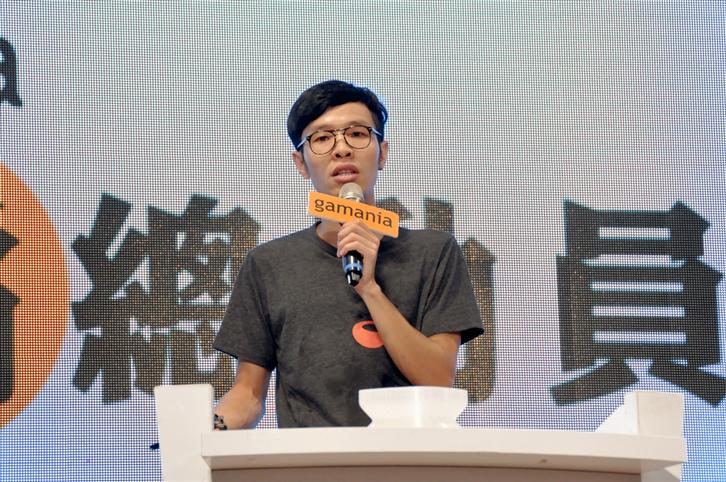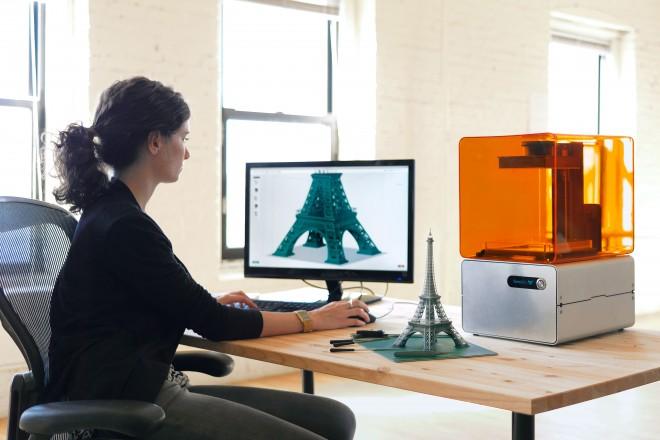
Scientific American magazine believes that 3D printing will revolutionize conventional manufacturing. The Economist even compared 3D printing to the 3rd Industrial Revolution. From individual makers and small design studios to big companies like GE, Adidas and BMW, everyone including the U.S. Government is all rushing headlong into the 3D printing market. All of this showed that 3D printing is now a trend you can’t afford to ignore. For this issue of “Gamania TownHall”, we invite Kamm, the founder of “Fabraft Design Lab” and “MakerBar Taipei” to share with Gamanians the applications and opportunities in 3D printing technology as well as the Maker movement that has sprung up around it!

▲ The desktop 3D printer is suggestive of a future return to home workshops.
What on earth is 3D printing?
3D printing is also known as additive manufacturing. Working from a digital model file, an object is quickly constructed by laying down layer after layer. In the past, it was mainly used for prototyping and the fabrication of high-cost, low-volume parts. NIKE, for example, began using 3D printing for prototyping its sporting footwear, reducing the fabrication time from 4 ~ 6 weeks down to 1 ~ 2 days. The number of shoemakers required also shrunk from 12 to 2. 3D printing technology not only helped NIKE to save costs but also freed up more time for innovation and R&D. What made it possible for 3D printing technology to go from large factories into small companies and personal workshops was the expiration of 3D printing technology patents owned by tech companies in recent years. The cost of owning a printer dropped from tens of thousands of US dollars to a few hundred US dollars, allowing the technology to see widespread use in many areas.

▲The unibody construction of the sole using laser sintering technology results in a weight of just 28.3g, allowing players to run faster.

▲The medical community is using 3D printing to create custom prostheses and complex organs.

▲Dutch fashion designer Iris Van Herpen used 3D printing technology to apply hard-to-sew materials like metal and plastic to clothing design, creating three-dimensional clothing with complex structures.

▲BMW and Swedish designer Erik Melldah used 3D printing technology to create the “Maasaica” concept car. This heralded a future restructuring the automobile industry chain.

▲Combing 3D filming and 3D printing technology greatly reduces the crafting time of personalized figures.
New opportunities from mass customization
3D printing does more than just change the nature of production. It will also impact on existing business models. Kamm invited everyone to imagine a time when 3D printer prices fall to an acceptable range and consumers can simply purchase digital model files online to print the product they purchased. How will this new form of consumption affect the industry? When the manufacturing, logistics and channels are bypassed altogether, the value chain and cost structure of many industries will fall apart. Some industries will fade away altogether. Features of 3D printing technology such as low-volume/high-mix, short production cycle, zero-inventory and the elimination of pricey molds will help brands open up new opportunities from mass customization.

▲US eyewear brand Protos Eyewear uses 3D printing technology to create glasses fitted to the customer’s face.
Rise of Maker Culture
Kamm also talked about how 3D printing technology as given rise to the Maker culture. The Open Source projects from many 3D printers (i.e., sharing of product models and fabrication parameters) allow makers to create their own 3D printers at low cost, greatly reducing the cost of product R&D and creating a new manufacturing model – Social Manufacturing. Apart from being centered around makers and 3D printing technology, social manufacturing uses maker space to provide venues, equipment and crowd-sourcing platform to raise R&D funding. The Open Source spirit unique to makers also encourages the sharing of experience. The rise of social manufacturing will accelerate the progress of human technological advances in the future.

▲The annual Maker Faire is a major festival where makers share their research results.
Reference:
http://goo.gl/28W7vb
http://goo.gl/d0Onrs
Image source:
http://goo.gl/5WWOxY
http://goo.gl/P5ufd8
http://goo.gl/pV6F1G
http://goo.gl/ZkobqP
http://goo.gl/eAzj6n
